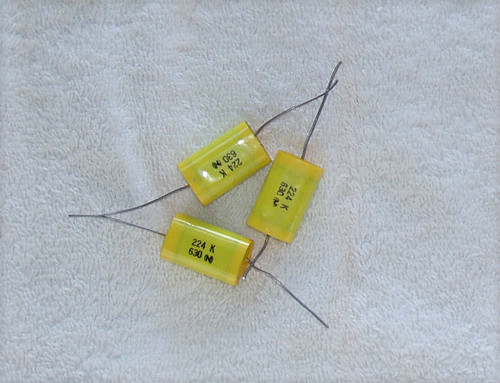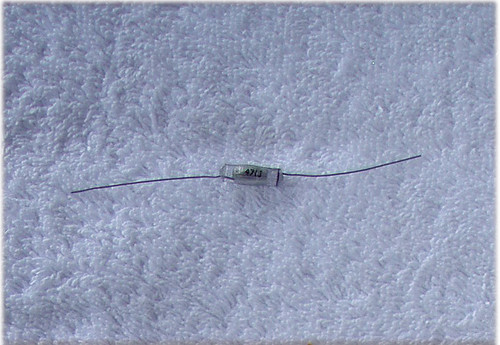I have seen a lot of capacitors over the years but these pose some mysteries for me ... hopefully others will know more after reading my description
SOURCE: equipment "pulls" SANSUI audio driver section
Sansui equipment dates from 1970's
Desirable capacitor for those who like to make custom "upgrades" of their audio equipment, particularly re-capping.
Polystyrene* Metal Foil Capacitors (8) (also referred to as Styroflex, which is a trade name not a capacitor type)
*It is possible that these could be polypropylene - I have hunted and searched but cannot find a definitive answer to identifying visually a polystyrene and polypropylene capacitor but allowing for the time period, I do not think these are polypropylene (which were developed to be more suitable for mass production soldering techniques)
Radial leads - desoldered (quickly, not subjected to excessive heat) from PCB and NOT shortened
VALUES OFFERED (AS ONE PACK):
2x 1.2nF (122)
4x 1nF (102)
2x .22nF (221)
I believe these are all 5% tolerance
I cannot decode the remaining markings on each capacitor ...
So what are these mystery markings?
Printed clearly in black on each capacitor is:
xxx (value) J
28 (manufacturers logo which looks like an i within a circle) J
Deciphering the value and tolerance is easy but the 2nd line is a mystery to me, I do not believe the 28 refers to voltage rating (the amplifier was running a supply rail of 80V for a start and 28V just seems way too low for a poly cap voltage rating) and why the second J?
Those who are more familiar with these specialised capacitors will hopefully know the answer.
I think it is important to know that on the Sansui PCB, each of these capacitors had printed on the board SF (Styroflex?) right next to the component designation - only these capacitors had the SF printed on the board.
The other thing I noticed is that the foil seems quite unusual in that instead of being the commonly found aluminium (silver colour) foil it looks to be copper foil (bronze colour)
In a polystyrene capacitor, polystyrene film is used as the dielectric, these capacitors provide high insulation, low distortion, high frequency ranges and good temperature stability although it is not a good thing to use them in environments where the ambient temperature is above 85C (tight, closely packed components with a heat source in close proximity e.g power output transistors)












